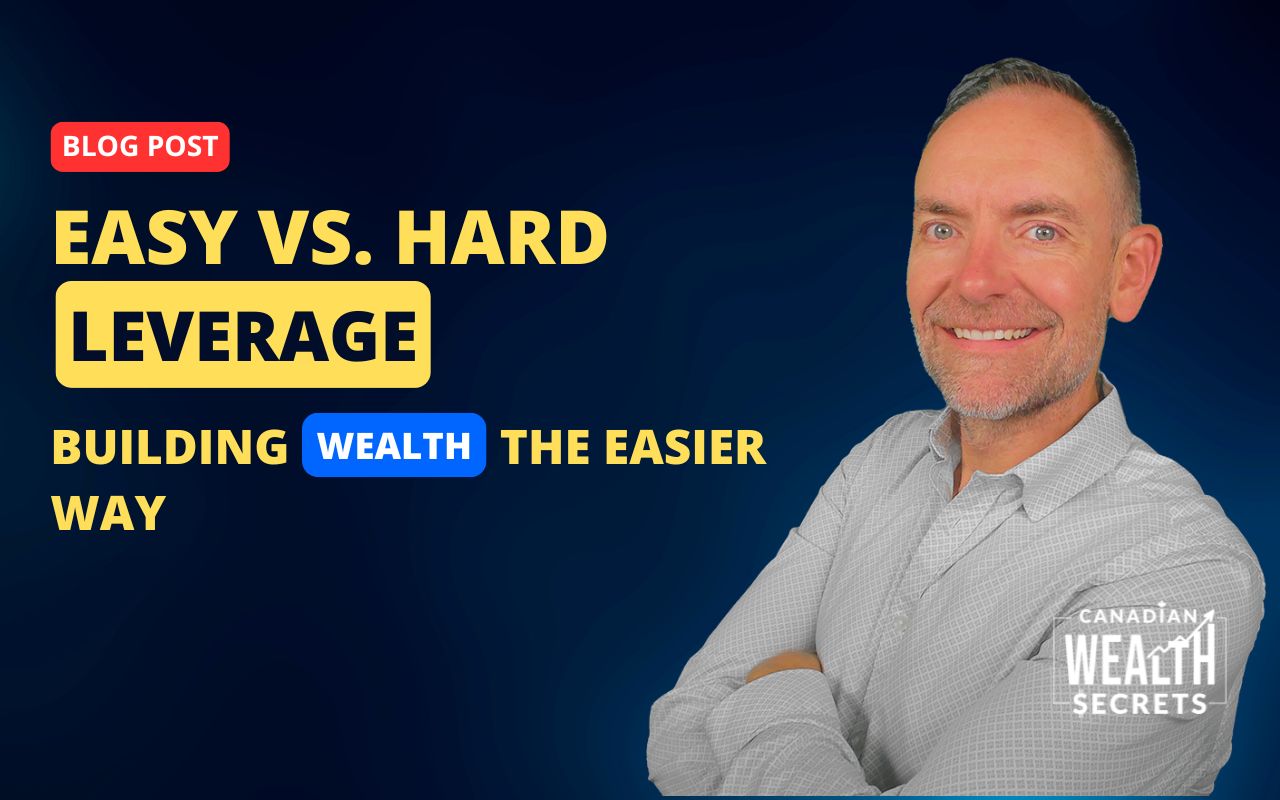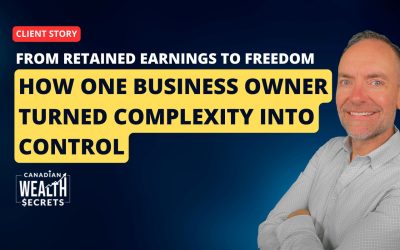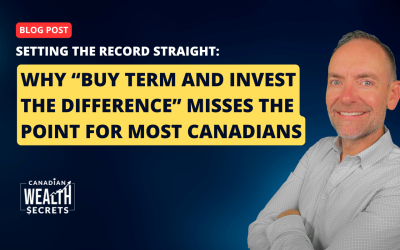If you’re a Canadian investor or incorporated business owner, chances are you’ve heard the word “leverage” thrown around more than once. You’ve probably even used it—whether against real estate, your corporation’s retained earnings, or even an insurance policy.
But here’s what most people get wrong…
Not all leverage is created equal.
In fact, as we shared in a recent episode of the Canadian Wealth Secrets Podcast, understanding the difference between easy leverage and hard leverage—and knowing which one to use in each situation—can be the difference between a streamlined wealth-building strategy and an unnecessarily complex (and expensive) one.
Let’s dig into the real-life case of Nancy and Alex, two seasoned real estate investors and incorporated business owners planning their retirement, to break this down.
The Real Question: Where Should You Leverage First?
Nancy and Alex are in their 50s and 60s. They’ve done well with real estate and have a professional corporation that generates strong annual income. They also have:
- Real estate investments on both personal and corporate sides
- A sizable stock portfolio
- A growing pool of retained earnings inside their corporation
- A desire to retire with strong cash flow
- A legacy goal to pass on wealth to their children, tax efficiently
So, what’s the best move when you have multiple assets across both sides of the corporate border?
The answer: Use the leverage that’s easiest and most strategic to access.
And that starts by understanding the assets you already have—then aligning your borrowing strategy with your overall wealth plan.
The Hidden Cost of Doing It the “Hard Way”
One major trap business owners fall into? Triggering unnecessary taxes by transferring funds between corporations or from corporate to personal accounts when they don’t need to.
For example, we recently spoke to a couple who were:
- Paying themselves T4 income from their corporation
- Paying personal tax on that income
- Then lending it to another company to invest in real estate
That’s a lot of unnecessary tax—especially when they could have simply kept the funds within the corporate structure and invested directly, avoiding the extra step (and tax hit).
This is a classic case of hard leverage: structurally complex, tax inefficient, and totally avoidable.
So What’s “Easy Leverage”?
Easy leverage is when you borrow against an asset in the simplest, cleanest, most tax-efficient way.
In the case of Nancy and Alex, one of the easiest leverage tools at their disposal was a corporate-owned permanent whole life insurance policy.
Here’s why:
- The policy accumulates high early cash value
- The corporation owns it and can borrow against it directly—no underwriting hoops, no personal credit checks
- It opens the door to other leverage strategies (even outside the policy)
- The death benefit pays out tax-free via the Capital Dividend Account (CDA), offsetting personal leverage or estate costs
In short: this one asset increases confidence and flexibility across the entire wealth plan.
What If You Need Cash Personally?
Now you might ask: “If the policy is corporate-owned, can I use it to fund my lifestyle?”
You can, but now you’re crossing into more complex territory. To move cash from the corporation to yourself personally, your options include:
- Salary or dividends (taxable events)
- Shareholder loans (limited duration, watch for shareholder benefit rules)
- Third-party lending (like an Immediate Financing Arrangement, or IFA)
These strategies can work—but they’re not always the first or best choice.
If you have personal assets like a primary residence with available equity, a secured line of credit (HELOC) might actually be the easier, more cost-effective way to generate cash flow.
Why? Because the insurance policy gives you confidence that your legacy is covered. So even if you carry some personal leverage, your net worth—and your heirs—remain protected.
The Four Pillars of a Healthy Wealth Planning System
Nancy and Alex’s case beautifully illustrates the four key stages of a robust wealth plan:
- Vision – Get clear on your long-term goals: cash flow, freedom, and legacy
- Corporate Wealth Reservoir – Build liquidity and optionality inside your business
- Optimization – Structure your assets and income flows for tax efficiency
- Legacy – Ensure your estate plan supports generational wealth transfer
A well-structured permanent insurance policy—combined with smart leverage decisions—touches all four.
Final Takeaway: Start With the Easiest Path
If you’ve got assets across both corporate and personal accounts, don’t fall into the trap of doing things the hard way.
Ask yourself:
- What am I trying to achieve—cash flow, growth, liquidity, or legacy?
- Which assets are easiest to borrow against?
- How can I align leverage with my tax strategy and future goals?
Often, the best solution is the simplest one. And when you structure your wealth system intentionally, leverage becomes a tool for peace of mind—not a source of stress.
Ready to Build Your Leverage Strategy?
If you’re an incorporated business owner looking to build tax-efficient wealth, protect your legacy, and generate reliable cash flow, we’d love to help.
👉 Book a Discovery Call and let’s map out your personal wealth strategy using the Canadian Wealth Secrets 4-Stage System.
Disclaimer: This content is for educational purposes only and does not constitute financial, legal, or investment advice. Always consult with a qualified advisor before making investment decisions.






